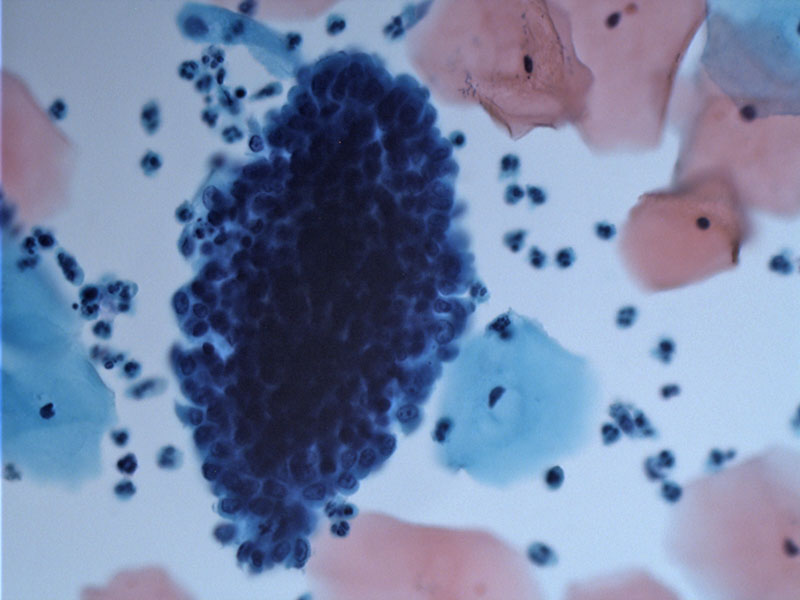

The most characteristic appearance of endometrial cells is the Image
The Pap smear is a strong screening tool that has decreased the incidence of cervical cancer. However, an adequate screening method for endometrial cancer has not yet been developed. Not infrequently, endometrial cells are identified in a Pap smear due to the anatomic continuity of the endocervix to the endometrium, as well as shedding of endometrium. The exact frequency with which normal endometrial cells are identified in routine smear is difficult to estimate, but published experience suggests a wide range from 0.5% to 3% (Greenspan).
When abnormal endometrial cells are identified in a Pap specimen, all pathologists will note this finding in their reports. The conundrum occurs when normal endometrial cells are identified. Is this finding significant? The current 2001 Bethesada Consensus recommends reporting endometrial cells in a Pap smear if the patient is over age 40. A body of evidence supports that benign endometrial cells are more likely to be associated with endometrial pathology in a peri- or post-menopausal woman. Note that this recommendation has its critics and the reporting standards will likely be further refined in the future.
While no treatment is necessary, women with abnormal uterine bleeding or risk factors for endometrial malignancy should be appropriately evaluated.
In one study, benign-appearing endometrial cells in Pap tests from women > or = 40 years were associated with endometrial pathology in 39.16% of the cases, with 3.50% being carcinoma (Jones). Another study found similar results, with histologic evaluation of the endometrium showing no pathology in approximately 72% of cases, significant pathology in 11% and benign pathology in 13% (Fadare).
Fadare O, Ghofrani M, Chacho MS, Parkash V. The significance of benign endometrial cells in cervicovaginal smears. Adv Anat Pathol. 2005 Sep;12(5):274-87.
Greenspan DL, Cardillo M, Davey DD et al. Endometrial cells in cervical cytology: review of cytological features and clinical assessment. J Low Genit Tract Dis 2006 Apr;10(2):111-22.
Jones E, Frain BM, Crabtree W. Clinical significance of reporting benign-appearing endometrial cells in Pap tests in women aged 40 years and over. Acta Cytol. 2009 Jan-Feb;53(1):18-23.